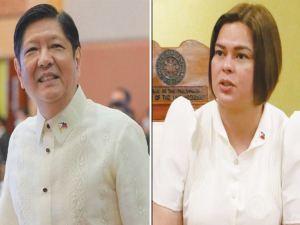On November 11, 2024, the Vancouver Chinatown Memorial Square was the site of a moving and meaningful Remembrance Day ceremony, held at 12:30 pm. The ceremony, drew a diverse crowd, including members of the Army, Navy & Air Force Veterans in Canada (ANAVET) Pacific Unit 180, the Chinese Canadian Military Museum Society, and various community groups and individuals.
Located at the intersection of Keefer and Columbia Streets, the Chinatown Memorial Square is home to the Chinatown Memorial, a tribute to the significant but often overlooked contributions of Chinese Canadians during key moments in Canadian history. The memorial features two bronze-cast statues. One depicts a Chinese railway worker, representing the many Chinese laborers who toiled and lost their lives constructing the Canadian Pacific Railway in the 1880s. The other statue portrays a Chinese Canadian soldier from World War II, standing proudly at attention, honoring the more than 600 Chinese Canadians who served in various military roles during the war.
This year’s ceremony marked a moment to reflect on the sacrifices made by these Chinese Canadian soldiers who enlisted during a time when they were not yet recognized as full citizens of Canada. In his address, Vancouver Mayor Ken Sim reminded the crowd that in 1939, Chinese Canadians were still excluded from many civil rights — they could not vote, hold public office, use public facilities like swimming pools or even get a job at Safeway. Yet, despite these injustices, more than 600 Chinese Canadians chose to enlist and fight for a country that had denied them full citizenship.
Former B.C. judge and President of the Chinese Canadian Military Museum Society, Randall (Bud) Wong, shared his perspective on the historical significance of these sacrifices. Wong emphasizes that the contributions of these soldiers helped secure two victories: one in defeating Canada’s enemies abroad, and another in securing the right to vote for Chinese Canadians. “It was because of the immense contributions and sacrifices of these Chinese Canadian soldiers,” Wong said, “that the Canadian government was finally forced to repeal the Chinese Exclusion Act in 1947 and accept Chinese Canadians as full citizens.”
Wong also announced an upcoming exhibit at the Chinese Canadian Museum, entitled “Soldier for All Seasons.” The exhibition, which opens in February 2025, will commemorate the 80th anniversary of the end of World War II and will honor the more than 200 Chinese Canadians who volunteered to fight in World War I, as well as the over 600 who served in the Second World War.
The ceremony was further enriched by a moving reading of For the Fallen, a poem by Laurence Binyon, read by Vancouver Poet Laureate Fiona Tinwei Lam. In the first stanza, Lam substituted “Canada” for “England” to reflect the broader national sentiment:
“With proud thanksgiving, a mother for her children
Canada mourns for her dead across the sea.
Flesh of her flesh they were, spirit of her spirit,
Fallen in the cause of the free.”
Wreaths, roses, and poppies were laid by a range of dignitaries, veterans, and community organizations and members, each paying tribute to the courage and sacrifice of those who served. The ceremony concluded with the solemn singing of “God Save the King.”
Ceremonies like these serve as an important reminder of the diverse contributions that have shaped Canada’s history. The Remembrance Day gathering at Chinatown Memorial Square not only honors the sacrifices of the past but also provides an opportunity for reflection on the continuing journey of recognition and reconciliation for Chinese Canadians and all veterans.
Thank you for the opportunity to share PCHC-MoM with your readers.








